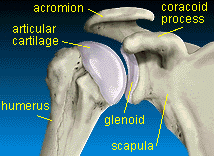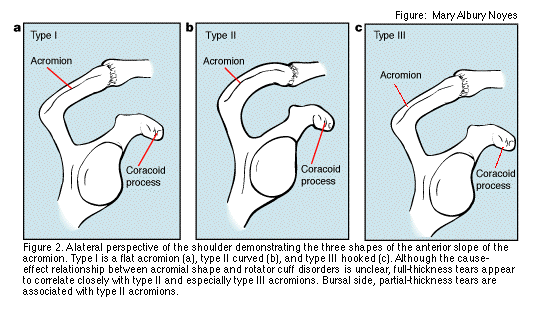The glenohumeral joint (sometimes
also called the scapulohumeral joint) is formed by the articulation of
the head of the humerus with the glenoid fossa of the scapula.

The glenohumeral joint (sometimes
also called the scapulohumeral joint) is formed by the articulation of
the head of the humerus with the glenoid fossa of the scapula.

This articulation is also considered a ball and socket synovial joint. If offers the greatest range of motion (ROM) and movement potential of any of the body's joints because of the limited ligamentous support. For the same reason it is also the most frequently dislocated joint
bones of the glenohumeral joint
Scapula
Clavicle
Humerus
The roof of the shoulder
is formed by the end of the clavicle and the acromion from the scapula.
The four rotator cuff muscles pass under this roof (also known as the coracoacromial
arch) to reach the humeral head.
The structures forming this
arch include the acromion, the acromioclavicular joint (AC), the coracoid
process of scapula and the coracoacromial ligament. The architecture
of the roof is dependent on the anterior slope of the acromion. This
sloping can reduce the space available for the rotator cuff to reach the
humeral head, possibly leading to impingement syndrome.

In the above picture you see three types of anterior slopes of the acromion. Type I is a flat acromion, Type II is curved and Type III is hooked. Full thickness tears of the of the rotator cuff appear to be correlated with a Type II and Type III acromion.